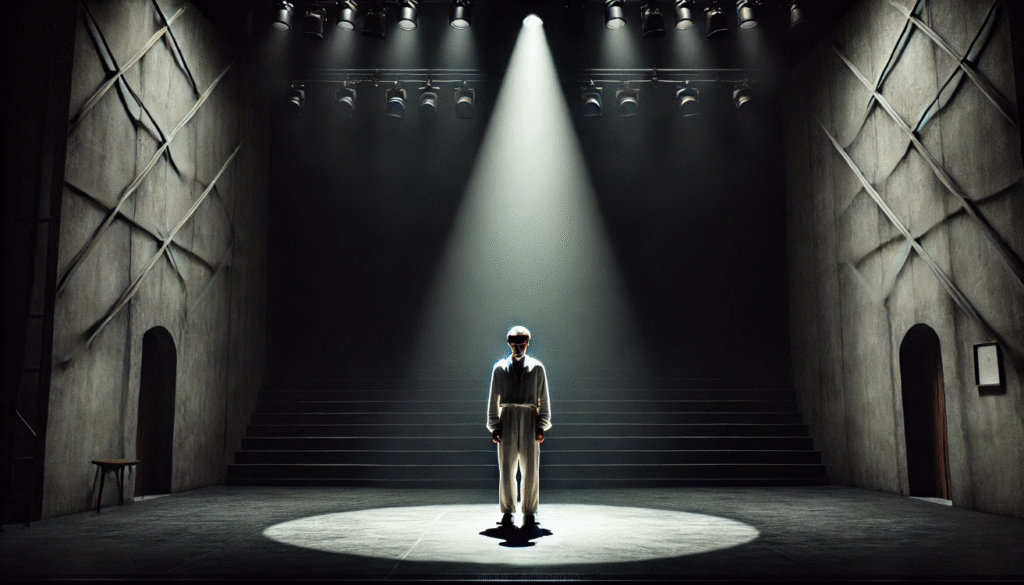 Shakespeare’s soliloquies and plot development hold a timeless appeal in literature and theater due to the techniques he employed in crafting them. Through his use of language, structure, and character development, Shakespeare was able to convey depth, emotion, and profound insight into human nature. By exploring soliloquies and plot development artistic tools and strategies, we can gain a greater appreciation for the enduring impact of his soliloquies and plot development which continue to resonate across centuries.
Shakespeare’s soliloquies and plot development hold a timeless appeal in literature and theater due to the techniques he employed in crafting them. Through his use of language, structure, and character development, Shakespeare was able to convey depth, emotion, and profound insight into human nature. By exploring soliloquies and plot development artistic tools and strategies, we can gain a greater appreciation for the enduring impact of his soliloquies and plot development which continue to resonate across centuries.
The Role of Soliloquies in Shakespeare’s Play:
Soliloquies and plot development is a dramatic device in which a character speaks their thoughts aloud, usually while alone on stage. Its function is to provide insight into the character’s inner thoughts and emotions, allowing the audience to gain a deeper understanding of the character’s motivations and conflicts. Soliloquies and plot development context of Elizabethan theater, soliloquies were commonly used as a way for characters to reveal their inner turmoil and conflict. However, it was Soliloquies and plot development who truly innovated the use of soliloquies in his plays. Soliloquies and plot development used them to great effect, allowing his characters to express complex emotions and moral dilemmas, and creating some of the most memorable and powerful soliloquies in literary history.
Purpose in Drama:
Incorporating insight into characters’ inner thoughts can provide the audience with a deeper understanding of their motivations and emotions. This can bridge the gap between the audience and the character’s psyche, allowing for a more immersive and engaging experience. By providing glimpses into the characters’ inner thoughts, the plot can be advanced as the audience gains a better understanding of the characters’ intentions and the reasons behind their actions. Additionally, foreshadowing can be effectively utilized through the characters’ inner thoughts, hinting at future events and building anticipation for what is to come. This can create a sense of suspense and intrigue, keeping the audience invested in the story.
Shakespeare’s Mastery in Structuring Soliloquies:
Use of Poetic Devices:

Ah, the beauty of blank verse and iambic pentameter, The rhythmic heartbeat of Shakespearean sonnets. With rhetorical devices like repetition, Antithesis, and alliteration, we add depth And power to our words, drawing in our audience And leaving a lasting impact on their minds. Repetition, the echoing of words and phrases, Drives home a point, engraving it in memory. Antithesis, the juxtaposition of contrasting ideas, Creates a tension that sparks thought and reflection. And alliteration, the playful dance of consonants, Adds a musicality to our language, a joy to the ear. So let us embrace these rhetorical devices, And wield them with skill to craft powerful verse.
Layered Meaning:
Surface-level emotions may include confusion or curiosity, as ambiguities can lead to a sense of uncertainty or intrigue. However, on a deeper thematic level, ambiguities in literature or art can serve as a reflection of the complexity of human experience, the fluidity of truth, or the diversity of perspectives. They can also invite the audience to engage in critical thinking and interpretation, fostering a deeper level of engagement with the work.
Shakespeare uses a combination of prose and verse to effectively convey the characters’ emotions and state of mind. Prose is often used to depict everyday speech and interactions, while verse is reserved for more heightened moments of emotion or introspection. By switching between the two, Shakespeare is able to create a dynamic and nuanced portrayal of the characters’ inner workings. This balance allows the audience to better connect with the characters and understand their thoughts and feelings. Overall, Shakespeare’s skillful use of prose and verse enhances the depth and complexity of his characters, making his plays enduringly compelling.
Characterization Through Soliloquies:

Revealing Inner Conflicts:
Hamlet’s soliloquy “To be or not to be” is a contemplation on the existential question of whether it is better to live or to die. In this famous speech, Hamlet grapples with the difficulties of life, the fear of the unknown in death, and the suffering that comes with existence. It is a powerful exploration of the human condition and the profound questions that we all face at some point in our lives.
Humanizing Villains:
Richard III opening soliloquy is a captivating and complex display of charm and ruthlessness. In this speech, Richard reveals his manipulative and scheming nature while also using his charisma to entice the audience. This soliloquy sets the tone for the entire play, showcasing Richard’s ability to win over others while plotting his ruthless rise to power. It’s a fascinating exploration of the duality of his character and sets the stage for the unfolding drama of the story.
Emotional Resonance in Shakespeare’s Soliloquies:

Techniques to Evoke Emotion:
Hey there, folks! Today we’re diving into some universal themes that have been captivating audiences for centuries: love, betrayal, power, and mortality. These themes resonate with people from all walks of life and have been explored in countless works of literature, art, and entertainment. Whether you’re a fan of Shakespearean tragedies or modern-day soap operas, these themes have a way of drawing us in and making us reflect on our own lives. So, next time you’re watching a movie or reading a book, keep an eye out for these timeless themes and see how they speak to you personally.
Connection with the Audience:
Soliloquies serve as a “direct address” to the viewers by allowing a character to speak directly to the audience, breaking the fourth wall. This can provide insight into the character’s inner thoughts and emotions, creating a sense of intimacy and connection with the audience. Despite addressing the viewers directly, soliloquies still maintain the dramatic integrity of the play or performance by serving a dramatic purpose within the context of the story. This technique can enhance the audience’s understanding of the character and their motivations, adding depth to the overall narrative.
Thematic Exploration in Soliloquies:
Key Themes:
In Shakespeare’s plays, these themes are central to the characters’ experiences and dilemmas. In Hamlet, the protagonist grapples with the existential questions of life and death, while Macbeth succumbs to his unchecked ambition, leading to his descent into tyranny. Othello’s emotional turmoil is driven by the themes of love and betrayal, and in Julius Caesar, the tension between fate and free will is a prominent feature, as the characters struggle with their destinies and their own agency. These timeless themes continue to captivate audiences and provide a rich exploration of the human experience.
Cultural and Philosophical Reflections:
The influence of Renaissance humanism in soliloquies is significant, as humanism placed a strong emphasis on the individual and the human experience. This emphasis is reflected in soliloquies, which are often introspective and allow characters to express their inner thoughts and feelings. Renaissance humanism also valued the study of classical literature and philosophy, which can be seen in the intellectual and philosophical nature of many soliloquies. Additionally, humanism emphasized the importance of language and rhetoric, which is reflected in the eloquent and persuasive language often used in soliloquies. Overall, the influence of Renaissance humanism in soliloquies is evident in the focus on individuality, introspection, intellectualism, and rhetoric.
Plot Development Through Soliloquies:
Foreshadowing is a literary device often used in plays to hint at future events, creating anticipation and intrigue for the audience. Soliloquies, or monologues spoken by a character alone on stage, can be a powerful tool for foreshadowing. For example, a character may unknowingly reveal their true intentions or desires in a soliloquy, hinting at future conflicts or plot developments. Additionally, soliloquies can serve as pivotal turning points in the narrative, shaping the direction of the story and the development of the characters. When a character grapples with a decision or realization in a soliloquy, it can set the stage for significant changes in the plot and the relationships between characters.
Comparing Shakespeare’s Soliloquies with Other Playwrights:

Elizabethan and Jacobean Contemporaries:
Shakespeare elevated the soliloquy by using it as a powerful tool to reveal the inner thoughts and emotions of his characters. Unlike standard dramatic conventions, Shakespeare’s soliloquies allowed characters to directly address the audience, providing insight into their motivations and conflicts. This technique added depth and complexity to his characters, making them more relatable and human. Additionally, Shakespeare’s use of poetic language and vivid imagery in his soliloquies further heightened their impact, making them some of the most memorable and iconic moments in his plays.
Modern playwrights and poets have been greatly impacted by a variety of factors, including changes in societal norms and values, technological advancements, and shifts in artistic movements. These influences have led to the exploration of new themes, styles, and techniques in their work. Additionally, the increased accessibility of diverse perspectives and voices has allowed for a greater range of storytelling and expression. As a result, modern playwrights and poets have been able to create more dynamic and thought-provoking pieces that resonate with a wider audience. This has ultimately contributed to the evolution and diversification of the literary landscape. Shakespeare’s soliloquies are truly timeless and continue to captivate audiences today. His mastery of language and insight into the human condition allows his soliloquies to remain relevant and relatable in modern times. By delving into Shakespeare’s works, readers can experience the depth and brilliance of his soliloquies firsthand. I encourage you to explore his works and discover the enduring power of his soliloquies for yourself.













